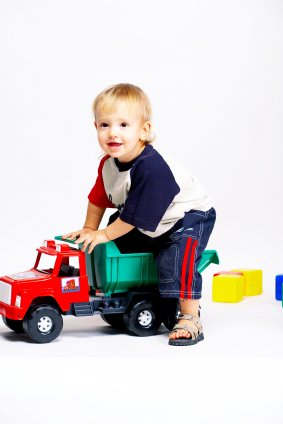Escape Plan and Simulated Escape. In a house fire, you have precious little time to get out of the home. From inception, a fire can become out of control in less than a minute and the house can fill with smoke within a couple of minutes thereafter. When the house is filled with smoke, there is no time to gather everyone and formulate a plan. Establish a written, well-diagramed primary escape plan from every room and every level of the home. The escape diagram should also contain alternate escape routes, such as through windows or onto an adjacent roof, from every room. Every month, practice escaping from different rooms in the home using the primary route and secondary routes of escape. Every member of the family must be thoroughly familiar with every point in the home, as well as with what happens after everyone has escaped, such as the rendezvous point and how to contact emergency personnel.
Test Doors Before Opening. During a fire, when you encounter a closed door, never open it as usual. Always test the door, the door knob and around the door gap, with the back of your hand, for excessive heat indicating fire on the other side. Opening of an untested door can cause the room to immediately fill with smoke or flames. If, after testing the door you decide to open it, do so slowly with your weight placed against the door. If smoke or excessive heat comes into the room, firmly close the door and use the alternate escape route.
Rendezvous. During the escape from a house fire, it may be impossible for everyone to exit the home simultaneously. That being the case, it is necessary to establish a rendezvous point. Decide on a familiar, easily identifiable spot a safe distance from the home. From here, you can identify who has gotten out safely and who may still be inside the home. Here, you can also contact emergency personnel. The rendezvous point and emergency contact information should also be included in your family’s escape plan.
Don’t Go Back! Once you are away from the home, and the local [tag-tec]fire department[/tag-tec] has been notified, don’t go back inside for any reason. As the dangers inherent to smoke inhalation and the reaction of fire with its environment are things to which civilians are not accustomed, your chance of survival is significantly diminished upon reentering the burning home. If there are persons who may be inside the home, a [tag-ice]firefighters[/tag-ice] chance at safely rescuing them is much greater than your own.
Know the Dangers of Smoke. Thankfully, most school children are taught that smoke and heat rise and that crawling is the best way to escape both. They often know that dropping to their knees and crawling allows them to breathe the cleanest air; however, continued reinforcement and what to do in other situations in a home fire is important. In a household fire, smoke is often filled with gasses which will disorient or incapacitate anyone. Teach children and other family members to feel doors, as mentioned earlier. If an attempt to open a door is made and excessive smoke is seen, again, the door should be closed and a secondary escape route taken.
Safety Equipment. Proper safety equipment can often prevent loss of property and life in the event of a fire. The most common fire safety equipment is the smoke detector. Each floor of a home should have, at a minimum, one smoke detector; however, the more the merrier. Multiple detectors can provide an earlier fire alert and save valuable seconds. Test your smoke detectors monthly and make their use a part of your fire drills. If you live in a multiple story home, purchasing multiple Underwriter’s Laboratory (UL) approved collapsible ladders is an excellent idea. They can easily be attached to a window frame for window escape and they can be stored in a closet, under a bed or in a drawer. They also come in various lengths to accommodate larger structures. Lastly, if you are considering a new home construction, it will be easy and affordable to have a sprinkler system installed. Contrary to popular belief, individual sprinklers work independently of one another and have proven to be extremely reliable. It’s also possible to retrofit sprinkler systems into existing homes.
The day may never come when you experience a house fire. Familiarizing yourself with these areas, and personalizing them to fit your situation, will help ensure your safety and that of those you love in the event that such a tragedy strikes. For a whole host of additional information regarding fire safety, check with your local fire department, the National Fire Protection Association or the U.S. Fire Administration.
No part of this article may be copied or reproduced in any form without the express permission of More4Kids Inc © 2006









Add Comment